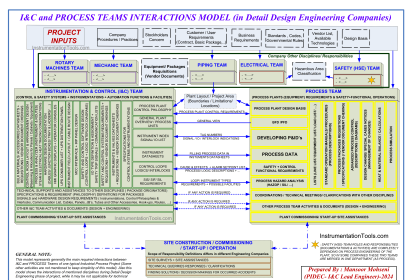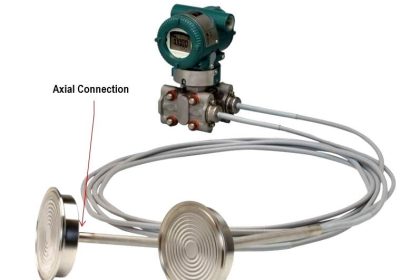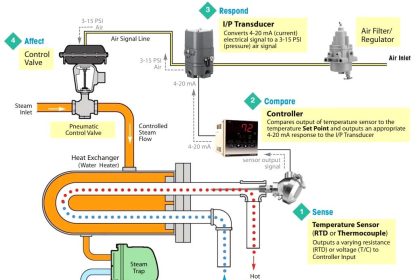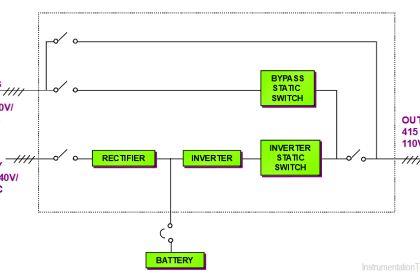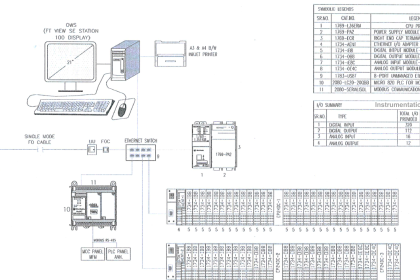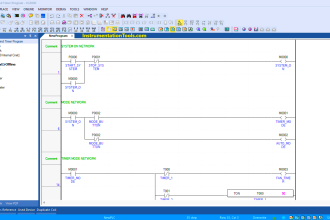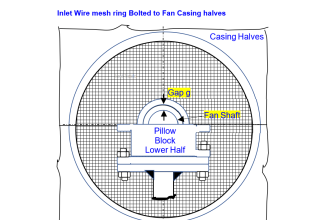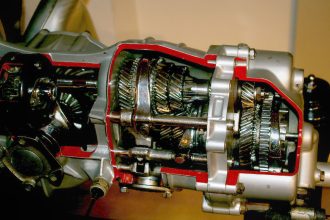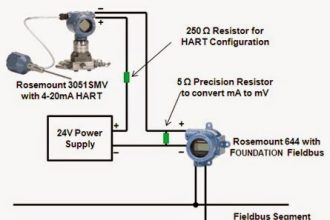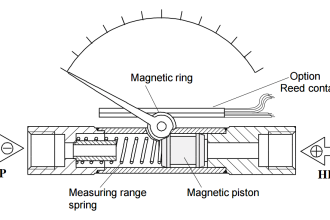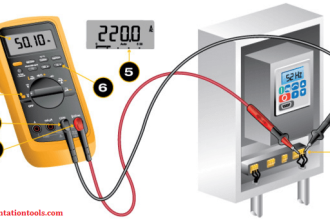Pneumatic piping employed in plants is used to convey air for two basic reasons:
(a) that of supplying Energy for the operation of instruments and other devices, and
(b) that of transmission of Information between instruments.
The integrity of the piping system is essential to avoid loss of the pneumatic supply and degradation of the transmitted signals.
Pneumatic Piping and Fittings
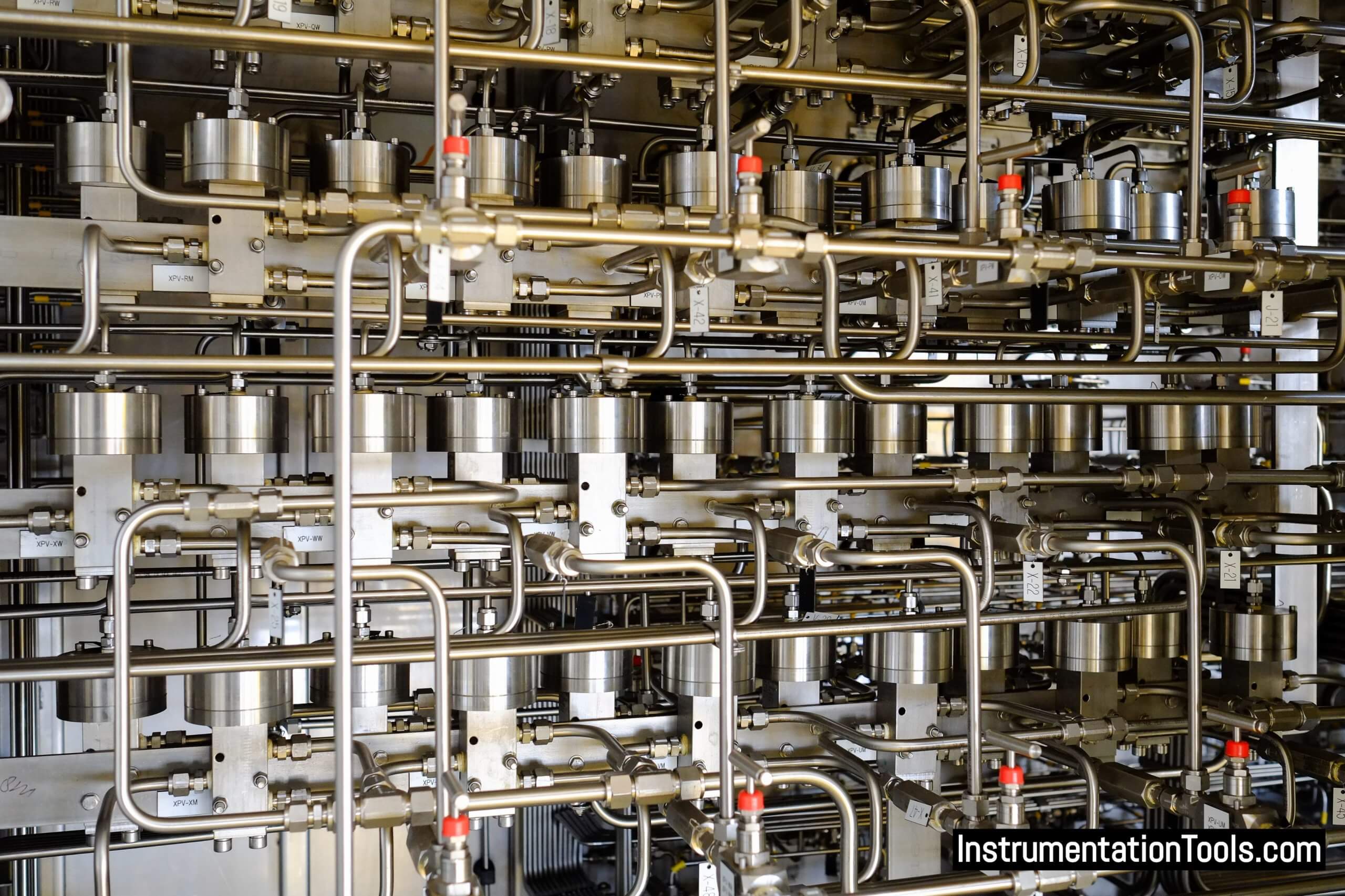
Signal piping is typically 1/4 inch outside diameter (OD) metal or plastic tubing. The signal piping system often includes a test tee and isolating valve at each receiving device to facilitate testing, calibration, or maintenance.
Common Materials
- Soft Copper, 1/4 in. OD x 0.030 in. wall thickness
- Polyethylene, 1/4 in. OD x 0.040 in. wall thickness
- Aluminum, 1/4 in. OD x 0.032 in. wall thickness
- Stainless Steel, 1/4 in. OD x 0.030 in. wall thickness
Certain applications may require plated or plastic-coated metal tubing.
Labelling and Colour Coding
Plastic or noncorrosive metal nametags should be attached to bulkhead fittings to identify the signal source, application, and/or other information. Color coded plastic tube can identify use of application, i.e.:
Air supply — RED
Transmitted measurement — ORANGE
Controller output to valve, pneumatic set slave, etc., — YELLOW
Seal (to remote mounted controller) — PURPLE
Set (to remote mounted controller) — BLACK
Branch transmitted measurement to readout element — GREEN
Branch transmitted measurement to readout element — BLUE
All others — NATURAL
Routing and Arrangement
All tubing installation should be in accordance with recognized good practices which generally provide that:
a) Metal tube runs should be routed horizontally and vertically with diagonal routing minimized.
b) All bends in metal tubing should be made with a tool designed for that purpose to prevent kinks or flattening.
c) Tubing runs should be routed to provide maximum access to the control center interior for ease of maintenance and equipment removal.
d) Tubing runs should be grouped for mutual support and neat appearance and secured with noncorrosive metal gang straps. Plastic ties or straps can be used for bundling of plastic tubes or the tubes can be run in wire ways.
e) Sharp bends in plastic tubes should be supported or protected to avoid kinks.
f) Test tees, isolating valves, and quick disconnects should be rigidly supported.
g) Tube fittings should be made up or installed in accordance with the manufacturer’s recommendations.
h) An isolating valve should be provided at each receiver when one signal line serves two or more receiver instruments.
Piping and tubing terminations are normally accomplished through the use of fittings designed to provide leak-free connections. Flared or compression type fittings are normally employed for tube terminations.
Fittings are normally threaded for insertion into tapped pipe thread holes in instruments or other devices.
Plastic tubing terminations are normally the compression type. Special metallic tube fittings, including weld-type and solder-type, are commercially available for special applications.
Fittings
Bulkhead Fittings
Bulkhead fittings provide a means for connection of field piping to the appropriate tube run inside the control center enclosure.
Bulkhead connections can be installed inside the control center enclosure or through the outer surface. The bulkhead fitting normally includes a means for rigid attachment to the control center enclosure and connectors for attachment of tubes at each end.
Tube Fittings
Tees, elbows, couplings, nipples, gauge cocks, shut-off valves, and other tubing components are commonly available in plastic, brass, certain alloys of stainless steel, and other metals. Material selection should normally be based on the application, operating pressures, flowing media, and ambient environmental conditions.
Pipe thread connections should be made leakproof by employing suitable sealing compounds or joint tape.
Interest to add any further points? Share with us through below comments section.
Read Next:
- Tube Fitting Types
- Control Valve Actuators
- Impulse Tube Leak Test
- Pneumatic Instrumentation
- What is Pneumatic Cylinder?
